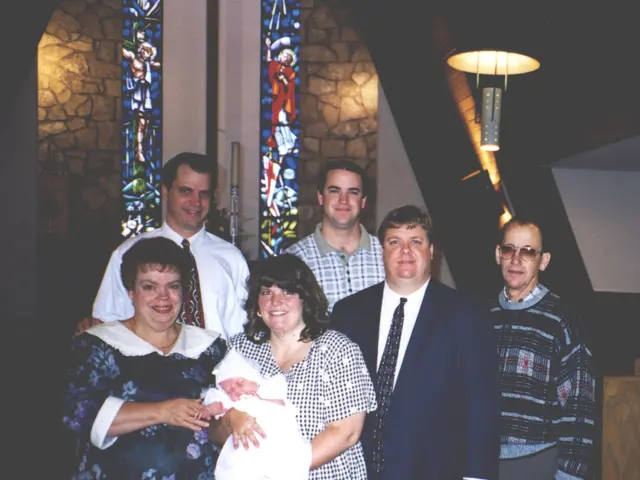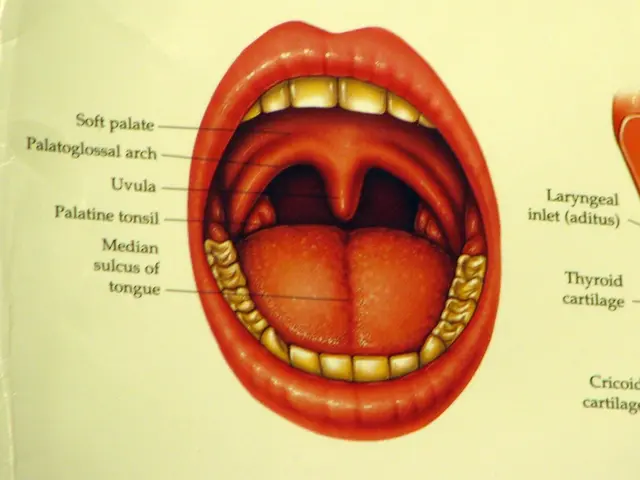Connection between Breast and Ovarian Cancer: Causes and Risk Factors
Breast and ovarian cancers are buddies, sharing a pact due to some DNA-bonding sessions, primarily triggered by genetic factors, especially the team-up of BRCA1 and BRCA2 genes.
The genetic bond between these cancers is showstopping, and it's not just a one-night stand; it lasts a lifetime. People who cheer for these genes have a higher chance of signing up for both teams.
Age, weight, and pregnancy history can also join the dance, all contributing to the risk of playing for either team. Managing these factors might make a difference in the game score.
Dance of the Cancers
Ladies (and gentlemen) diagnosed with breast cancer are eyeing another dance with the ovarian team. If the illness has a genetically charged past, the possibility of a dance-off becomes quite probable. Researchers have noticed that breast cancer dancers are about twice as likely to join the ovarian party.
The ovarian side of the dance floor isn't left out, either. They have a higher risk of bumping into breast cancer. This time, it's all about the genes again.
People with ovarian cancer may possibly have a high swift kick at other cancers too, including bladder, bile duct, colorectal, acute leukemia, and melanoma of the eye.
Risky Business
BRCA1 and BRCA2 mutations are the bomb when it comes to genetic factors that make one a VIP player in the breast and ovarian cancer scene. Around 40% of families with ovarian and breast cancer carry the BRCA1 gene mutation, while roughly 20% hold the BRCA2 mutation.
Other genetic, lifestyle, and reproductive aces in the hole include:
- Family history of either cancer
- Older age (ovarian cancer typically strikes over 40; breast cancer hits most between 55 and older)
- Being overweight or obese
- Having a first child after age 30
- Never being pregnant
- Not breastfeeding
- Hormone replacement therapy post-menopause
Ready to Duet?
Some risk factors, like a previous dance with breast or ovarian cancer, can't be changed. However, managers can keep an eagle eye, suggest lifestyle changes, or even consider preventive medical tactics for those taking a recurring bow.
Healthcare professionals might encourage more frequent and thorough screenings for dual dancers, including mammograms, breast MRI scans, pelvic exams, transvaginal ultrasounds, and CA-125 blood tests. Genetic testing can help determine the best strategies for monitoring and prevention.
For those carrying genetic mutations, doctors may bring extra options to the table, like prophylactic surgeries to remove organs or tissues, minimizing the risk of cancer.
When Practice Makes Perfect
Modifiable risk factors include:
- Maintaining a moderate weight through exercise and diet
- Limiting alcohol intake
- Considering oral contraceptives as a cancer-defying weapon (but weigh the risks for breast cancer)
A 2020 dance-off between primary breast and ovarian cancer partners showed a relatively good outlook, with 5- and 10-year overall survival rates soaring to around 90%. The positivity is usually brighter when the interval between the dances is longer.
However, ovarian cancer swiftly follows breast cancer, often appearing in a later dance-floor position, which can negatively impact survival. Age during the first dance and the gap between the dances can help predict the overall survival.
Always Practice Safe Dance
If signs or symptoms of breast or ovarian cancer sprout up or if there's a threatened dance with a family history, it's crucial to call in the talent agent—a healthcare professional. Staying vigilant for recurrence or a second dance after a previous diagnosis is essential for improved outcomes.
Don't Break a Sweat With Our Resources!
Visit our shiny hub for more - erm, evidence-based information and handy resources on cancer.
Frequently Asked Questions
Q: Can ovarian cancer up the risk for other cancers?A: Yes, sis. Ovarian cancer might sneak out with other cancers, like breast, bladder, bile duct, colorectal, acute leukemia, and melanoma of the eye.
Q: Can breast cancer masquerade as ovarian cancer and vice versa?A: Dancers can sometimes confuse each other on the floor, but it's more common in advanced breast cancer. This might be more likely in hormone receptor-positive cancers or those with BRCA mutations.
Q: Who's more likely to be called for a second dance?A: High-risk ovarian candidates include those with BRCA1 or BRCA2 mutations, a family history of ovarian, breast, or colorectal cancer, Lynch syndrome, endometriosis, never getting pregnant, late first pregnancy, and age over 40 years.
- Breast and ovarian cancer participants often share a genetic link, titled the BRCA1 and BRCA2 genes connection.
- Those diagnosed with breast cancer might find themselves revisiting the dance floor of ovarian cancer, especially if they have a genetic history.
- Breast cancer dancers tend to have a higher probability of joining the ovarian party as researchers have observed.
- Ovarian cancer dancers also face a greater risk of crossing paths with breast cancer.
- BRCA1 and BRCA2 gene mutations are significant factors in the genetic scene of both breast and ovarian cancer.
- Factors such as family history, age, weight, pregnancy history, and hormone replacement therapy can influence the risk of either dance.
- People carrying the BRCA1 or BRCA2 gene mutations are over four times more likely to develop ovarian cancer.
- Healthcare professionals recommend frequent and thorough screenings, genetic testing, and lifestyle modifications for those considered high-risk for both dances.
- Maintaining a moderate weight, limiting alcohol intake, and considering oral contraceptives are some modifiable factors to lower the risk.
- The overall survival rates for the combined duet of breast and ovarian cancer have shown promising results; however, the timing and age of the initial dances can impact survival.








